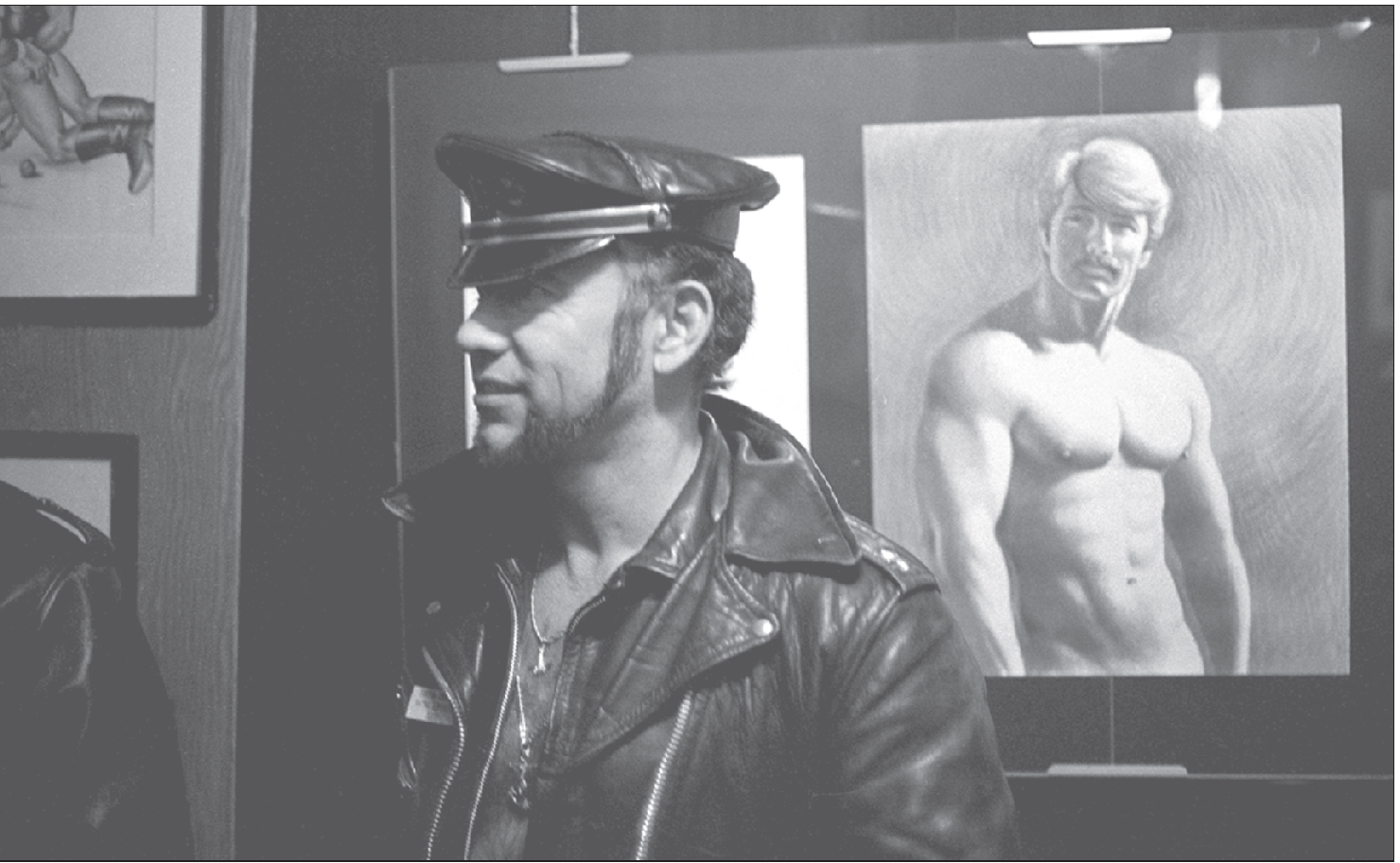
PHOTOGRAPHER, artist, and designer Andrew J. Epstein has had behind-the-scenes access to some of the most important and influential gay artists of the last forty years, and fortunately he has had his camera in hand to record much of it. In the 1970’s, living in New York City’s West Village, he met artist Tom of Finland and photographed many of the artist’s gallery shows. Epstein’s photos are featured in Taschen’s recent, massive tribute to the artist titled Tom of Finland XXL. The first one-man show of Epstein’s photography, “Queer Culture,” was featured at the ONE National Gay & Lesbian Archives in West Hollywood last September.
Gay & Lesbian Review: How did you meet Tom of Finland?
Andrew Epstein: I first met Tom in New York City in 1978. I had a friend named Louie Weinstein who owned a leather and boot shop called Stompers in the West Village. He also had an erotic art gallery in the store. Louie had some very famous fetish art shows there, and Tom’s was going to be the biggest yet. I designed the posters for the show, and Louie wanted to include me in the show, but Tom rejected the idea. But later Louie and my friend Robert Mapplethorpe discovered that Tom had never actually seen any of my work, so they set up a meeting between me and Tom at the party given in Tom’s honor for the show. We met in the kitchen and I showed him my block prints and he flipped out over them and apologized for rejecting me and offered me a spot in the show. There were two shows that Tom had in New York City: one was at Stompers and the other was at the Robert Samuel Gallery. I shot both.
G&LR: What was he like as an artist? Did he talk to you about his work?
AE: He was a very quiet man with a very strong ability to concentrate. He didn’t talk much when he drew. I watched him many times. I just sat there, and every once in a while he would ask if a hand or a foot looked right, but that was about it. He once did a drawing of me that was pretty funny. It looked like me if I were a humpy Aryan type, rather than a skinny Jew from Skokie. I’m sure he was very private about his work to many, but we had so much in common that I didn’t seem to bother him being in the room while he worked. And many assume there was sex involved when he was drawing, but I never saw any. He was very focused on his drawing while he was working.
G&LR: Do you think he had any idea he would become so iconic?
AE: I think Tom would be amazed at what Durk [Dehner, who runs the Tom of Finland Foundation] and the Foundation have accomplished in keeping Tom’s art alive and in front of the public. Tom was never a good businessman, and much of his art was lost or stolen. He was ripped off over the years. I know Tom was excited to see his work in print, but a book like the new Taschen one would have been beyond anything he would have imagined.
G&LR: Did you set out to deliberately document Tom’s work, or did it just happen?
AE: Yes, I did. I knew the Stompers show was very important and I just shot all night. My lover, Richard Schmiechen [who later won an Oscar for producing The Times of Harvey Milk], taught me always to see the bigger picture. He was an amazing guy in that way. I don’t believe in coincidence; nothing happens without a really good reason. I was meant to document all my friends. Many of them would not be around very long, and it was my job to record their time on earth. I always felt that, almost from the beginning, even before AIDS hit.
GL&R: How much of Tom’s work did you end up shooting?
AE: About sixty to eighty images. I used to share a darkroom with Mapplethorpe, and he started a fire during one of his little orgies and many of my negatives were ruined. I refused to throw the water-soaked negatives away, and for some reason I knew that someday I would be able to fix them. This was 20 years before computers. Fixing them is how I learned PhotoShop, and I corrected about 85 percent of the lost images.
G&LR: What prompted you to put together the “Queer Culture” show?
AE: About five years ago I asked Ann
Bannon, the lesbian novelist [author of Odd Girl Out, Beebo Brinker, and I Am a Woman, among others]if I could photograph her. She asked me why, and I told
her about all the people I had shot who were friends, lovers, or just parts of assignments. She was amazed and she was the one who suggested that I put them together and present them within the context of gay history. When I finally edited the images, it blew me away what I had done over the years.




